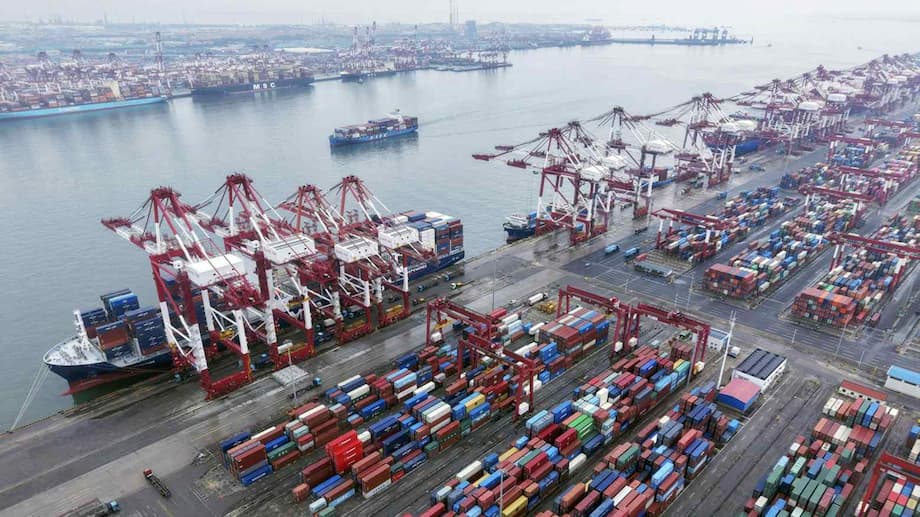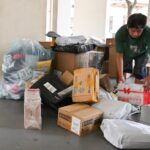Why Japanese trade officials are opening more cases
Japan is moving faster this year to scrutinize whether a wave of cheap imports is undercutting its manufacturers. Trade officials have opened more antidumping investigations in 2025, a pickup that mirrors the pressure created by Chinese industrial overcapacity and export price cuts across a range of goods. Between January and August, four new proceedings were launched, the most for that period since Japan adopted World Trade Organization rules in 1995. The focus stretches from steel sheet and coils to chemicals used in electronics and packaging. A slump in Chinese domestic demand, driven by a long property slowdown, has left producers with excess capacity. Those goods are now redirected to foreign markets at prices that local industries say do not reflect fair value.
- Why Japanese trade officials are opening more cases
- What counts as dumping and how cases proceed in Japan
- Steel at the center of the storm
- Chemicals and other goods join the list
- Exporting deflation and the price squeeze
- How Japan compares with the US and EU
- Ripple effects across Asia
- What businesses in Japan should expect next
- At a Glance
Government notices show that, since the mid 1990s, Japan has initiated 21 antidumping cases in total. The pace in 2025 stands out for the number of filings and the breadth of sectors. Applications from steelmakers and chemical suppliers have moved into formal probes after screening. The Ministry of Economy, Trade and Industry (METI) and the Ministry of Finance (MOF) oversee the process. Their trade remedy teams are small by international standards, with a few dozen specialists handling technical analysis that can run for months. Tokyo is under pressure from industry groups who warn that a flood of low priced shipments is exporting deflation into the Japanese market. Producer prices in metals and basic materials show a steady squeeze.
What counts as dumping and how cases proceed in Japan
Dumping occurs when a company exports a product at a price below its normal value. That benchmark is usually the price charged at home, or a constructed cost that includes a reasonable profit. Under WTO rules, a government may impose antidumping duties if it can show that dumped imports cause material injury to a domestic industry. Japan aligns its investigations with the Anti Dumping Agreement, and decisions rest on evidence of both pricing behavior and harm.
From petition to provisional duties
Cases in Japan start with a petition from domestic producers that account for a major share of the output of the product in question. METI reviews the filing for sufficiency, then opens a case with MOF if the claims meet legal thresholds. Investigators send questionnaires to foreign exporters, importers, and domestic producers. The team tests whether export prices fall below normal value, and whether volumes and price effects have injured the local industry through lost sales, falling profits, or plant closures.
If preliminary findings point to dumping and injury, Japan can apply provisional duties while the case continues. Provisional measures can last up to four months in most cases. A final determination typically comes within one year. If confirmed, antidumping duties match the calculated dumping margin for each producer or exporter, and remain in place for five years. A review can extend or remove the duties based on new data. Importers who have not planned for this can face unexpected costs or delayed shipments at the border.
How dumping margins are calculated
Dumping margins are calculated by comparing an export price with a normal value, while making fair adjustments for differences in product features, sales terms, and freight. If no reliable home market price exists, officials construct a normal value using production costs plus a reasonable profit. The result is expressed as a percentage of the import price, and that percentage sets the level of any duty. Accurate cost data from respondents can lower the margin, which is why exporters often work intensively with investigators.
Steel at the center of the storm
Steel is the flashpoint. China produces about half of the worlds steel each year, and exports surged in 2023 as domestic construction sagged. Japanese mills argue that a new wave of low priced flat products, wire rod, and specialty stainless is depressing prices in their home market, cutting profits and squeezing investment plans that include cleaner furnaces and new materials.
A glut that dwarfs local demand
China shipped about 90 million tonnes of steel in 2023, up by roughly one third from the year before. That export volume alone exceeds the annual output of either the United States or Japan. Even a small fraction of Chinas production redirected abroad can move world prices. The Organization for Economic Cooperation and Development has warned that excess steelmaking capacity worldwide reached hundreds of millions of tonnes, a level that blunts the effect of domestic production cuts and makes trade remedies more likely.
Case list in 2024 and 2025
Recent Japanese investigations include cold rolled stainless steel sheets from China and Taiwan, and hot dip galvanized steel from China and South Korea. Authorities also opened a case on nickel based stainless cold rolled sheet from China and Taiwan during the summer. Industry groups say that a large share of steel dumping investigations worldwide in 2024 involved Chinese products. Those filings mirror complaints from Japanese builders and machinery makers who report volatile supply and sliding prices for key inputs.
Galvanized sheet is a staple for guardrails, appliance panels, and building frames. Cold rolled stainless is a critical material for food processing equipment and precision parts. Price swings ripple through autos, construction, and electronics. That is why petitions have come not just from integrated steel producers, but also from mid sized firms that supply parts to exporters. They are seeking a floor under prices long enough to recover costs and plan capacity upgrades.
Chemicals and other goods join the list
Steel may draw most headlines, yet chemicals are also part of the story. Investigations opened this year include bisphenol A from South Korea and Taiwan, a building block for polycarbonate and epoxy resins used in compact discs, lenses, coatings, and can linings. Officials are also weighing whether to extend existing duties on potassium carbonate from South Korea. That compound is used in glass, detergents, and batteries.
Why chemicals matter
Chemicals feed long production chains that stretch from refineries to chip packaging and medical devices. Lower import prices can help some users in the short term. Japanese producers counter that a prolonged stretch of below cost prices can gut domestic capacity, which then leaves buyers exposed to supply shocks. Policymakers must weigh those trade offs in each case and consider whether non tariff measures, such as quality standards or voluntary export restraint, can ease disruption.
Trade policy debate in Tokyo has widened beyond metals and basic chemicals. Textile makers and suppliers to wind power projects have warned about sudden price shifts tied to cheap imports of fabric, towers, and components. Advanced battery materials are another pressure point, since East Asia has become the hub for cathodes, anodes, and separators. Any remedy that raises input costs must be balanced against energy transition targets and industrial policy goals.
Exporting deflation and the price squeeze
Chinese producers have cut export offers across a wide set of goods, from steel and aluminum to solar panels and electric vehicles. That pricing pushes down global benchmarks, a dynamic often called exporting deflation. In Japan, where demand growth is modest and cost pass through is uneven, the effect shows up most clearly in producer prices for materials and intermediate goods. Input costs fall for some factories, yet the savings are not always passed on at the store because labor and logistics remain tight.
Domestic suppliers say the race to match import prices forces cuts to maintenance, training, and new equipment. Clean steel projects, which rely on significant upfront spending and long payback periods, are especially sensitive to price cycles. If price pressure persists, Japan risks losing productive capacity in upstream sectors that support defense, transport, and energy. Policymakers argue that calibrated trade remedies can smooth extreme swings without closing the door to fair trade.
Winners and losers in the near term
Import dependent sectors, including homebuilding, packaging, and food processing, benefit from cheaper steel coils and resins. Exporters of finished goods may gain if they can source inputs at lower cost. The effect is mixed in the medium term. If suppliers exit the market, replacement sources may come from further afield and carry currency and logistics risk. That uncertainty is one reason why many Japanese buyers support investigations even when they are not petitioners.
How Japan compares with the US and EU
Japan has long used trade remedies less frequently than the United States and the European Union. That partly reflects a preference for industry consultation and standards. It also reflects capacity. The trade remedy teams at METI and MOF number around forty specialists, far fewer than the staff working on similar cases in Washington and Brussels. The result is careful case selection, with a focus on sectors where injury claims are most documented and where supply alternatives exist.
Tariffs, scope, and timing
American authorities moved this year to raise tariffs on some Chinese steel and aluminum products to a rate in the low twenties. The European Commission has coupled traditional trade remedies with a carbon border adjustment that will phase in reporting and charges on imported emissions. Japan has not matched those steps, but it has moved more quickly to vet petitions and to consult with partners when imported volumes spike. Close coordination within the Group of Seven helps limit diversion when one market tightens rules.
Ripple effects across Asia
Across Asia, governments are grappling with the same flood of supply. Southeast Asian economies have seen rising imports of basic metals and clean energy products that compete with local firms. Vietnam and Indonesia have opened more investigations. Taiwan recently launched a probe into imports of rolled steel from China after its largest producers complained of lost sales. South Korea is preparing cases tied to hot rolled coils. Mexico has moved as well, a reminder that trade flows can reroute quickly when one door closes. Policymakers in advanced economies now watch for transshipment through third countries, and have tightened rules of origin and audit procedures.
ASEAN caught between supply and security
ASEAN countries have welcomed Chinese investment in vehicles, batteries, and solar equipment, which supports jobs and emissions targets. The same wave raises concerns among some governments and buyers in the United States, Europe, and Japan about supply chain security and tariff circumvention. Rules that govern origin, subsidies, and data access are getting stricter. That shift affects Japanese businesses that source from factories in Vietnam, Thailand, or Indonesia where Chinese firms hold stakes or supply key inputs. Companies will need to document content more carefully to keep market access and to manage the risk that new duties could apply to their orders.
What businesses in Japan should expect next
More petitions are likely if the global slowdown continues and Chinese export volumes stay high. Cases already on the docket will run through 2025, with provisional measures possible along the way. Importers should prepare for the risk of cash deposits or surety bonds at the border if provisional duties are applied. Exporters that sell into Japan can lower their exposure by responding promptly to questionnaires and by providing complete cost data.
Japanese buyers can take practical steps now. Monitor case filings and product scope definitions, which can be very specific about chemistry, thickness, and grade. Adjust supply chains to keep alternate sources ready in case duties apply to a given producer or country. Review contracts so that responsibility for trade remedy costs is clear, and build duty pass through clauses where possible. Work with customs brokers and industry associations to stress test logistics.
Balancing resilience and competitiveness
The challenge for policymakers and firms is to balance short term savings from cheaper imports with long term resilience. A diversified supplier base, healthy domestic capacity, and investment in cleaner production can coexist with open trade. Trade remedies are tools for extreme cases, not a cure for structural issues. Decisions in the coming months will shape investment signals for steel furnaces, chemical plants, and renewable energy supply chains.
At a Glance
- Japan opened four antidumping investigations between January and August, the most for that period since 1995.
- Cases cover steel products such as cold rolled stainless and galvanized sheet, and chemicals including bisphenol A.
- Industry groups report that most steel dumping cases worldwide this year target Chinese exports.
- Chinese steel exports reached about 90 million tonnes in 2023, up by roughly one third, putting downward pressure on prices.
- Japan administers cases through METI and MOF, with decisions guided by WTO rules.
- Provisional duties can apply within months, with final measures lasting five years if dumping and injury are confirmed.
- US and EU policies are tightening, raising the risk of trade diversion and stricter origin checks in Asia.
- Businesses in Japan should prepare for possible duties, review contracts, and keep supply options open.




